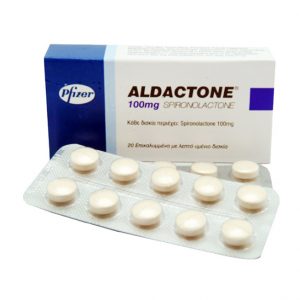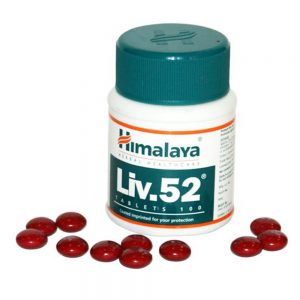Side effects:
Nausea, vomiting, abdominal pain, gastritis, ulceration and bleeding in the digestive tract, intestinal colic, diarrhea or constipation, dizziness; drowsiness, lethargy, headache, lethargy, ataxia, muscle spasms, decreased potency, increased urea concentration, hypercreatininemia, hyperuricemia, impaired water-salt metabolism and CBS (metabolic hypochloraemic acidosis or alkalosis); megaloblastosis, agranulocytosis, thrombocytopenia. With prolonged use – gynecomastia, erectile dysfunction in men; in women, dysmenorrhea, amenorrhea, menopausal metrorrhagia, hirsutism, roughness of voice, breast tenderness, breast carcinoma, allergic reactions (urticaria, maculopapular and erythematous rashes, drug fever, pruritus). Overdosing. Symptoms: nausea, vomiting, dizziness, diarrhea, skin rash, hyperkalemia (paresthesias, myasthenia, arrhythmias), hyponatremia (dry mouth, thirst, drowsiness), hypercalcemia, dehydration, increased urea concentration. Treatment: gastric lavage, symptomatic therapy of dehydration and lowering blood pressure. In case of hyperkalemia, a quick introduction of dextrose (5-20% solutions) and insulin at the rate of 0.25-0.5 U per 1 g of dextrose; repeat if necessary.
Dosage and administration:
Inside With liver cirrhosis with a Na + / K + ratio less than 1, the daily dose is 100 mg, if the ratio is more than 1 – 200-400 mg / day. When nephrotic syndrome: 100-200 mg / day in combination with thiazide diuretics. When edematous syndrome: 100-200 mg / day in 2-3 doses, in combination with a “loop” or thiazide diuretic. Assign daily, for 5 days, then, depending on the effect, the daily dose is reduced to 25-35 mg or gradually increased to 200-400 mg in 2-4 doses. In case of arterial hypertension: 50-100 mg / day, once, or in 2-4 doses for 2 weeks in combination with antihypertensive drugs, and then the dose is gradually increased every 2 weeks to 200 mg / day. With hypokalemia: 25-100 mg, once, or in several doses (maximum daily dose – 400 mg). In case of primary hyperaldosteronism: during the preparation for the operation – 100-400 mg / day in 2-4 doses; if it is impossible (or refusal) to perform surgery – long-term treatment with minimal effective doses. As a diagnostic tool: 400 mg / day in divided doses for 4 days (short test) or for 3-4 weeks (long test). Idiopathic hyperaldosteronism – 100 mg / day. Correction of the dosing regimen is carried out taking into account the plasma K + concentration. With pronounced hyperaldosteronism and reduced K + content in plasma, it is prescribed in a daily dose of 300 mg in 2-3 doses (up to 400 mg / day), while improving the state, the dose is gradually reduced to 25 mg / day. With polycystic ovary syndrome and hirsutism – 100 mg 2 times a day. Children with edematous syndrome: 1-3.3 mg / kg or 30-90 mg / sq. M per day, once or for 1-4 doses. After 5 days, the dose is adjusted and, if necessary, increased by 3 times from the initial dose.



